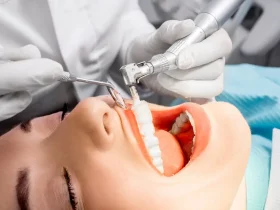The task of ensuring the students’ safety and welfare is very overwhelming especially during field trips. Teachers need to make sure that their students will learn something. But more than that, how can a teacher enjoy himself in a museum and learn too?
The most important part of every field trip is the planning stage. This is where the teachers need to focus to be prepared for the upcoming battle or the trip. Here are ways on the things you can do before the field tripTo learn more about educational travel, contact ETC to learn more.
- Check the destination
The most important part of the field trip is to check the destination. The teacher should review the museum or the place they are going. The teachers should also take note of the nearest police stations and transportations.
- Set groundwork, but not too strict!
It is important to put down rules to prevent any unnecessary accidents during the trip but teachers sometimes get a little too overboard in their do’s and don’ts. It is important to keep in mind that the students’ safety should be the first and foremost priority but keep in mind that the students’ went on the field trip to learn something while enjoying themselves.
- Provide background of the destination
Before a field trip, it is important for students to know the background of the place. Teachers can provide learning material for the museum for example, to get the students excited and curious about the place. It gives them what they can expect in the museum.
- Split the class into smaller groups
When going outside the school, it is important to practice the buddy-buddy system. It is important for students not to go alone especially when they are going to an unfamiliar place. It will also help if the students should always wear their identification cards, to help them in case they get lost on the trip.
After the preparation stage, the teacher can breathe a bit freely, the hardest part of the trip has passed. The only thing the teacher needs is to ensure that his planning will be implemented properly so he can enjoy the field trip too. Here are some things a teacher can do while in the trip (aside from worrying about the children incessantly):
- Look for future lessons ideas
A museum is brimming with many things that a teacher can use as his lesson for the next few days. For example, things in the art museum such as paintings can be used in history and english lessons, the teacher can discuss the painting’s history, the story behind it and the inspiration of the author that led him painting it.
- Listen and catalog information from the tour guide
Teachers can also have the opportunity to enjoy a quick trip in museums too. One of the things that teachers can do is to listen to the tour guide and take notes in what they are saying. It is not only a way for the teachers to learn something, but it can be used as a teaching material in the future.
- Use activities developed by the museum
Museums have many activities laid out for the people to use. Some of these are interactive and simulations . For example, the Museum of Science and Industry in Chicago, Illinois, has flight simulators and an interactive exhibit where it shows the evolution of human transportation. Teachers can also watch various films with different topics in different museums.
Now that the field trip is finished, the teachers can let out a huge breath of relief. Hopefully, the trip has gone successfully and the tips above worked flawlessly. But, the trip does not end there, the teachers should ensure that the things the students learned in the museums should be internalized and etched in their minds. So, here is a tip that can help teachers to ensure that the students really learned the materials in the museum.
- Conduct an after museum talk
The teachers can use one hour of class time to talk about the things their students learned in the field trip. It will also help build the relationship between the students and teachers as this will be a way for them to talk freely.
There are many ways the teachers can do in a field trip than just looking out for students. They should try activities that the destination offers and try to use it as a way to build better relationships with your students.










